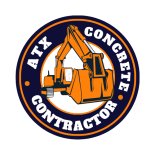Concrete cutting is an intricate process that involves precision, skill, and specialized equipment. Whether it’s for construction, renovation, or demolition, the importance of employing professional concrete cutting techniques cannot be overstated. Here’s a detailed exploration of why it matters:
The Importance of Professional Concrete Cutting Techniques
Professional concrete cutting ensures safety for both workers and the surrounding environment. Precise techniques prevent structural damage, reducing the risk of accidents during construction or renovation.
Exact Measurements: Accurate cutting techniques are crucial for ensuring that concrete structures are cut to precise measurements. This precision is vital, especially when installing utilities like plumbing, electrical conduits, or HVAC systems.
Professionals utilize diamond blades and advanced tools designed specifically for cutting concrete. These tools minimize vibrations, dust, and noise, ensuring a cleaner and more efficient cutting process.
Technique Expertise: Professional concrete cutters possess in-depth knowledge of various cutting techniques, such as flat sawing, wall sawing, core drilling, and wire sawing. They can determine the most appropriate method for each specific project, optimizing results.
Improper cutting techniques can weaken the structural integrity of a building. Professional concrete cutting ensures that surrounding areas remain intact, preventing cracks or structural compromise.
Preserving Aesthetics: Professional cutters focus not only on precision but also on maintaining the aesthetic appeal of the structure. Their expertise prevents unsightly or uneven cuts that could affect the overall appearance of the construction.
Professional techniques expedite the cutting process, saving time during construction or renovation. This efficiency reduces project timelines, which can be crucial in meeting deadlines and avoiding costly delays.
Minimizing Waste: Precise cutting minimizes the amount of wasted material, which ultimately saves on costs. This is particularly important for large-scale projects where material wastage can significantly impact the budget.
Professional concrete cutters employ methods to control dust and debris, ensuring a cleaner worksite. This not only enhances safety but also reduces environmental impact.
Proper Waste Disposal: They adhere to regulations for proper disposal of concrete waste, contributing to environmentally responsible construction practices.
Professional concrete cutters possess the expertise to handle reinforced concrete structures. They understand the complexities of cutting through steel reinforcements without compromising the structure’s integrity.
Hardness Variations: Concrete hardness can vary based on factors like composition, age, and curing methods. Professional cutters are adept at identifying these variations and adjusting cutting techniques accordingly for optimal results.
Professional concrete cutting minimizes the risk of causing damage to adjacent structures or areas. This is particularly crucial in urban settings where buildings are close together.
Risk of Injury: Precision cutting reduces the risk of injuries to workers and bystanders. Professional techniques prioritize safety measures, including the use of proper protective gear and adherence to safety protocols.
Professional concrete cutting techniques are versatile and applicable across a wide range of projects, including construction of roads, bridges, tunnels, and renovations in residential, commercial, and industrial settings.
Customization Possibilities: Professionals can create customized cuts to accommodate unique designs or architectural requirements. This level of customization adds value to construction or renovation projects.
Professional cutting techniques ensure a clean and polished finish, enhancing the durability of the concrete. Properly cut surfaces are less susceptible to deterioration over time.
Reduced Repair Needs: Well-executed cuts reduce the likelihood of structural issues, minimizing the need for future repairs or maintenance, thus saving time and costs in the long run.
Professional concrete cutters are well-versed in local building codes and regulations. Their work complies with these standards, ensuring that projects meet legal requirements.
Certifications and Training: Professionals often undergo specialized training and hold certifications that validate their skills. This ensures adherence to industry best practices and quality standards.
Employing professional services enhances client satisfaction by delivering high-quality, precise results that align with project expectations.
Building Reputation: Contractors and construction firms that consistently employ professional concrete cutting techniques build a reputation for reliability and excellence, leading to more opportunities in the industry.
Conclusion
Professional concrete cutting techniques stand as the cornerstone of safe, efficient, and structurally sound construction and renovation projects. Through precision, specialized expertise, and adherence to stringent safety measures, these techniques ensure not only the accuracy of cuts but also the preservation of structural integrity and aesthetics. The multifaceted benefits, ranging from risk mitigation and compliance with regulations to long-term durability and client satisfaction, underscore the indispensable role of professionals in this field. In an industry where precision and reliability are paramount, investing in professional concrete cutting services isn’t just a choice; it’s a fundamental necessity for achieving lasting, high-quality results in any construction endeavor.
